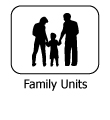…isn’t that just another would-be-sweet-in-theory, idealist movement, that sounds great except for the pure and simple fact that it’s IMPOSSIBLE in the REAL WORLD?
In reality, you likely do it every day when you decide on a place to eat with friends, set a meeting time with a colleague, or decide where to travel with your spouse. In fact, most free market transactions are a near form of consensus. This challenge drives the innovation of companies and consumers. And while applying consensus to a large scale provides challenges, solutions do exist.
Dr. Schein of MIT defines a strong organizational culture as consensus around values and decisions. As we enter a new paradigm of leadership, thriving organizations are increasingly focused on fostering this foundation. They are sharing power, engaging the hearts of their employees, and fostering horizontal collaboration. Mega companies like Gore-Tex, 3M, and Patagonia, as well as energy businesses, local restaurants, even whole towns, are moving away from top-down bureaucracy, and towards dynamic, innovative, inclusive structures. They are finding an enormous competitive edge in this mindset, such as: high talent retention, increased innovation, less office politics, and more work satisfaction.
Below are some examples of places where these philosophies have been positively implemented.
From the Town of Casper, California, to massive corporations like 3M, consensus is not only possible, it can reap huge benefits.
Buyers and users are becoming more cooperative too, as collaborative consumption networks grow rapidly. Owners are sharing their homes on couch surfing websites while reuse networks like eBay and craigslist boom. Time banks, rides shares, community cycling shops are all on the rise. American consumers today are working together more than ever before, more interactively, more dynamically, more collaboratively. At the heart of these movements is a simple belief: In our companies, our communities, and our nations, together we can do more.
Many organizations have realized the potential for a competitive edge and cultural shift in less hierarchical, more collaborative practices. There are clear structures and tools to make that transition possible and practical. That is what functionalconsensus.org presents here: a clear blueprint to powerfully overcome the logistical and social challenges of consensus decisions, making it practical, efficient, and effective in today’s world. To read more, follow the links on the sidebar and/or in the main menu.
Consensus isn’t all roses and chocolate:
- Initially, less efficient than many other decision modes
- Necessary to have top-down support of adopting consensus decision making
- Culture of trust is as necessary as it is challenging to instill
- www.cleancommunicate.org needs to be part of organization’s working model
- Compassionate Communication facilitates productive and supportive consensus meetings
- Organizational values (culture) that everyone can hang their hat on must be clear and present
- Emotional intelligence greases the wheels, yet is not as common as desired
- Consensus decisions also result in failure and loss at times
Consensus is no silver bullet… learn:
- How consensus is no panacea or cure all
- Why consensus decision making fails (and how you can help it not to)
- What’s different between consensus and voting












